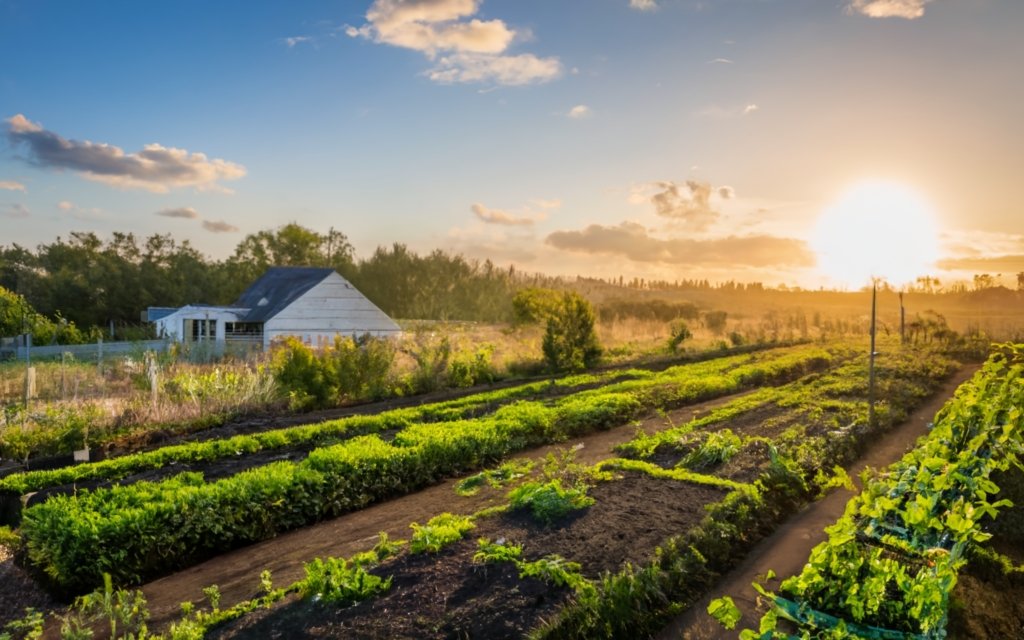How Urban Farming is Sowing the Seeds of a Food-Secure Future

In a world grappling with population growth and diminishing arable land, urban farming emerges as a revolutionary solution. Transforming vacant lots and rooftops into lush gardens, the initiative known as Urban Farming as the Future of Food Security is redefining agriculture and addressing food security.
The Billion-Dollar Revolution of Urban Farming
“Urban farming is a necessity, not a hobby,” states Dr. Jane Williams, an urban planning expert. The industry’s growth is evident in the latest 2023 statistics. Over 29,000 urban farms exist in the United States, with 70% of urban farmers growing food primarily for personal consumption. The global Urban Farming Market is on track to reach USD 203,672.82 million by 2027.
But numbers only reveal part of the story. Urban farms are more than plots of land; they are community hubs. “These farms are centers of social interaction, education, and employment,” adds Williams. They are sprouting in unexpected places like schoolyards and abandoned factories, proving that significant impact doesn’t require vast acreage.
The industry is also democratizing farming. It attracts a diverse range of participants, from tech-savvy millennials to retirees. Community-led initiatives and technology are making farming accessible to people who never considered it an option.
Additionally, the industry is seeing an influx of investment from both the public and private sectors. Grants, subsidies, and venture capital are flowing into urban farming projects, signaling a strong belief in the industry’s potential for high returns—both financially and socially.
Urban Farming's Transformative Role in Global Food Security
“Urban farming addresses multiple facets of food security,” says Mark Scott, a food security analyst. Quality, source, and distribution are as crucial as quantity. With nearly 70% of the population projected to live in cities by 2050, urban farming’s role in food security is increasingly vital.
Cities like Detroit and Singapore serve as case studies for urban farming’s transformative power. In Detroit, community gardens have revitalized neighborhoods, offering not just food but also a sense of belonging. In land-scarce Singapore, vertical farms in high-rise buildings are the norm. “These farms make use of underutilized spaces and provide fresh, local produce,” Scott notes.
Urban farming also offers environmental benefits. It reduces the carbon footprint associated with food transportation and promotes biodiversity. Composting turns organic waste into valuable soil nutrients, creating a closed-loop system that benefits both the environment and the community.
Moreover, urban farming is becoming a tool for social justice. In many cities, low-income neighborhoods suffer from a lack of access to fresh, healthy food. Urban farming initiatives in these areas are not only providing residents with better food options but also offering educational programs that teach people how to grow their own food, thereby empowering them to break the cycle of food insecurity.
What Urban Farming Could Mean for 2030 and Beyond
“The industry’s promising trajectory means we’re on the right track, but the real work is just beginning,” says Emily Green, founder of Urban Farming as the Future of Food Security. The industry is expected to reach around USD 281.9 Billion by 2030, growing at a CAGR of 3.1% from 2023 to 2030.
Technological advancements like vertical farming and hydroponics are set to elevate the industry. However, challenges like zoning laws and subsidies exist. “Policy can either fuel growth or stifle innovation,” warns Green. Striking a balance that benefits society is crucial.
Education and public awareness are also vital. “We need to move beyond the ‘wow’ factor and get people involved,” says Green. Whether through school programs, community workshops, or social media campaigns, education is essential for sustainable growth.
The next decade will also see a focus on research and development. Scientists and agronomists are working on developing new strains of crops specifically designed for urban farming conditions. These crops would require less water and fewer pesticides and would be more resistant to the kinds of pests found in urban areas.
Urban farming is a transformative force for a food-secure future. “We’re sowing more than seeds; we’re sowing hope,” says Green. As you pass a rooftop garden or a once-vacant lot now full of life, remember you’re witnessing a revolution. This revolution promises a greener, more secure future where abundance replaces scarcity.
The urban farming movement is not just a trend; it’s a paradigm shift in how we think about food, community, and the very fabric of urban life. It’s a shift that promises to bring us closer to a world where food is not a privilege but a right and where the term ‘food desert’ becomes a relic of the past. As we look to the future, urban farming stands as a beacon of what’s possible when innovation, community, and sustainability converge.
What's Next?
The urban farming movement is not just a trend; it’s a paradigm shift in how we think about food, community, and the very fabric of urban life. It’s a shift that promises to bring us closer to a world where food is not a privilege but a right and where the term ‘food desert’ becomes a relic of the past. As we look to the future, urban farming stands as a beacon of what’s possible when innovation, community, and sustainability converge.